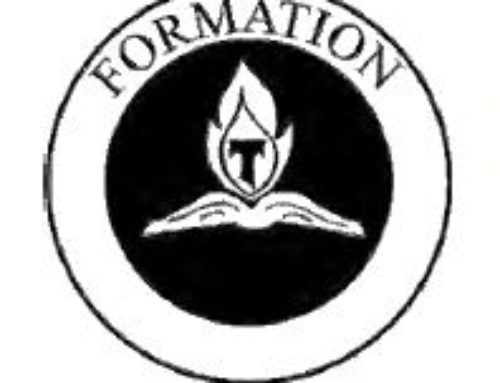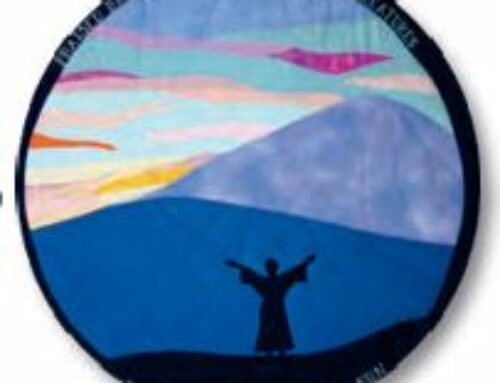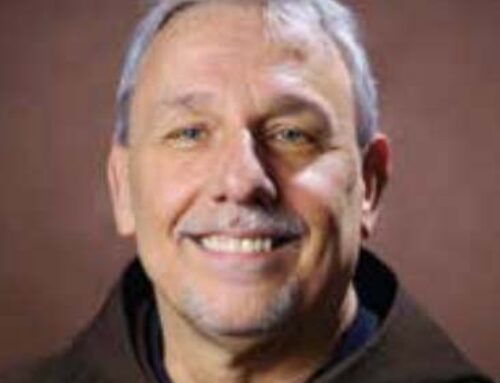 The entire National Executive Council (NEC) was recently blessed to spend an entire day with all the current Friars on the Conference of National Spiritual Assistants (CNSA). We met together; celebrated the Holy Sacrifice of the Mass together, shared three regular meals together, walked and talked and relaxed together for an entire day, the first time I have enjoyed such an entire day with all the NEC and all the CNSA meeting and sharing together.
The entire National Executive Council (NEC) was recently blessed to spend an entire day with all the current Friars on the Conference of National Spiritual Assistants (CNSA). We met together; celebrated the Holy Sacrifice of the Mass together, shared three regular meals together, walked and talked and relaxed together for an entire day, the first time I have enjoyed such an entire day with all the NEC and all the CNSA meeting and sharing together.
I would encourage the next NEC and CNSA, as well as Regional Executive Councils and Regional Spiritual Assistants in each of our 30 Regions to do the same: an entire day together, just with each other, at least once every three years.
During one of our discussions, Friar Matthias Wesnofske, OFM Capuchin, the only Friar I know who has, as his responsibilities, one National Fraternity, two Regional Fraternities and, I believe, seven Local Fraternities, as well as managing correspondence instruction for Spiritual Assistant Training, well, Friar Matthias said to the effect that despite all the “new scholarship” and “new insights” into Franciscan spirituality, he still felt that what he had learned and always believed and taught was true: that the four basic aspects of the Franciscan Charism were the Crib, the Cross, the Cup and Creation.
Not blessed with a tape recorder at the time or anything approaching “total recall,” permit me to expand Friar Matthias in my own words, with apologies to him, especially if I get something wrong!
The first C is the Crib. In my mind’s eye, I can still see the Giotto fresco of St. Francis preparing the Christmas crib or, in Italian, “presepe” at Greccio, hanging above me to the right as I faced the altar at the Upper Basilica of St. Francis in Assisi as we celebrated the Installation Mass for the newly elected officers of the International Fraternity in November 2014. This fresco painting and the work of St. Francis to prepare and celebrate the birth of Christ have influenced every subsequent nativity scene in your house or local Church.
The Franciscan Charism with the Crib is our firm foundational Franciscan faith in the Incarnation; namely, that the Word was made flesh and dwelt among us. Jesus is Emmanuel, God with us, humbling Himself out of love for God and for all Creation.
The second C is the Cross. Of course, Jesus’ love did not stop at the Crib. Jesus’ love for us carried all the way to the Cross, to his laying down his life for all of us. ”Greater love has no one than this: to lay down one’s life for one’s friends” (John 15:13).
Again, in my mind’s eye, I can see above and before me the original San

Damiano Cross hanging in the Church of Santa Chiara in Assisi.
This Cross, so important to both Sts. Francis and Clare, depicts a loving, relational sacrifice shared with God’s Creation: angels, humans and even a rooster! Christ hangs bleeding on the Cross, yes, but His eyes are open, and His face shows that perfect joy of suffering accepted for the love of God and the love of all of us.
That love and sharing extend to the third C, which is the Cup.
The Cup of the Eucharist, the Blood and Body of Christ, keep us close to the Christ of the Crib, the Christ of the Incarnation, and the Ch rist of the Cross. The Holy Sacrifice of the Mass not only re-presents the Passion and Death of Christ, but also continues His loving, giving presence among us, Emmanuel, the God Who will never leave us.
rist of the Cross. The Holy Sacrifice of the Mass not only re-presents the Passion and Death of Christ, but also continues His loving, giving presence among us, Emmanuel, the God Who will never leave us.
As Saint Francis often said, “I see nothing bodily of the Most High Son of God in this world except his most holy body and blood” (Secular Franciscan Rule 5).
This presence of Christ in the Incarnation and in the Eucharist continues in the fourth C, which is Creation. Again, I can see in my mind’s eye, to the right, as I exit toward the front doors of the Upper Basilica of St. Francis in Assisi, the great Giotto fresco of St. Francis preaching to the birds.
of St. Francis in Assisi, the great Giotto fresco of St. Francis preaching to the birds.
This love of Francis for all of God’s Creation is a love of God in all Creation.
Thus, in the Franciscan Charism, the 4 C’s are inter-related, not unlike the inter-relationship of the Father, Son and Holy Spirit. Crib leads to Cross, which leads to Cup, which continues Christ’s Presence in all Creation, physically begun at the Incarnation.
A fifth and uniting C would be Christ Himself because all the 4 C’s focus on Christ. Christ is the center. Christ came among us poor and laid in a Crib. Christ lived among us, loving us, even to dying on the Cross for us. Christ continues to live with us both in His most bodily form in the Cup of the Holy Eucharist, and also in all of Creation, as both author and ultimate goal.
Indeed, a sixth C would be Christ’s example of Conversion. As we can read in Philippians 2:6-8: though Christ was in the form of God, Christ did not deem equality with God as something to be grasped. Rather He emptied Himself and became like us, human in appearance. He humbled Himself, becoming obedient to death, even death on a Cross.
So each of us is called, as followers of Christ in the footsteps of Sts. Francis and Clare, to daily, ongoing conversion, to a daily striving to model our thoughts and deeds to those of Christ (see Secular Franciscan Rule 7).
Friar Matthias said all this much better, and other Franciscan scholars have written longer and more clearly on each of these aspects, but I have tried to share the four foundational C’s of our great Franciscan Charism, reinforced so strongly for me in the great art seen so recently in Assisi and in the Celebration of the Holy Mass there by our friars and Pope Francis.
Peace and love,
Tom
Reflection Questions
- According to Friar Matthias Wesnofske, OFM Capuchin, what are still, despite all the new scholarship, the four basic aspects of the Franciscan charism?
- What would be the first basic aspect? Why might this aspect be listed first? Explain this aspect in your own words.
- What would be the second basic aspect? Why might this aspect be listed second? Explain this aspect in your own words.
- What would be the third basic aspect? Why might this aspect be listed third? Explain this aspect in your own words.
- What would be the fourth basic aspect? Why might this aspect be listed fourth? Explain this aspect in your own words.
- Who, of course, unites all these aspects?
- What might be a sixth aspect to guide our daily lives? Explain this aspect in your own words.
This is an excerpt from a series of articles by the late Deacon Tom Bello, OFS, former Minister of the National Secular Franciscan Order – USA. “Many of these essays were originally published in TAU-USA, our national newsletter,” said Jan Parker, OFS, current National Minister. “They are excellent for reflection and ongoing formation.” Jan helped Tom publish these essays in book form. It is called For All The Saints: St. Francis’s Five-Point Plan for Salvation and is available from Tau Publishing. These excerpts will appear several times a week on the Secular Franciscans website.





Leave A Comment